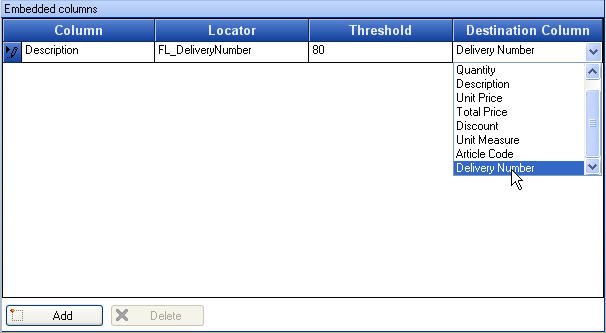Embedded columns
Sometimes a column contains values that belong to another column. For example, the Description column may include a delivery number within that cell. Use the Embedded Columns feature on the Advanced tab of the Properties of Table Locator window to copy the delivery number to a delivery number column while keeping the rest of the description intact.
